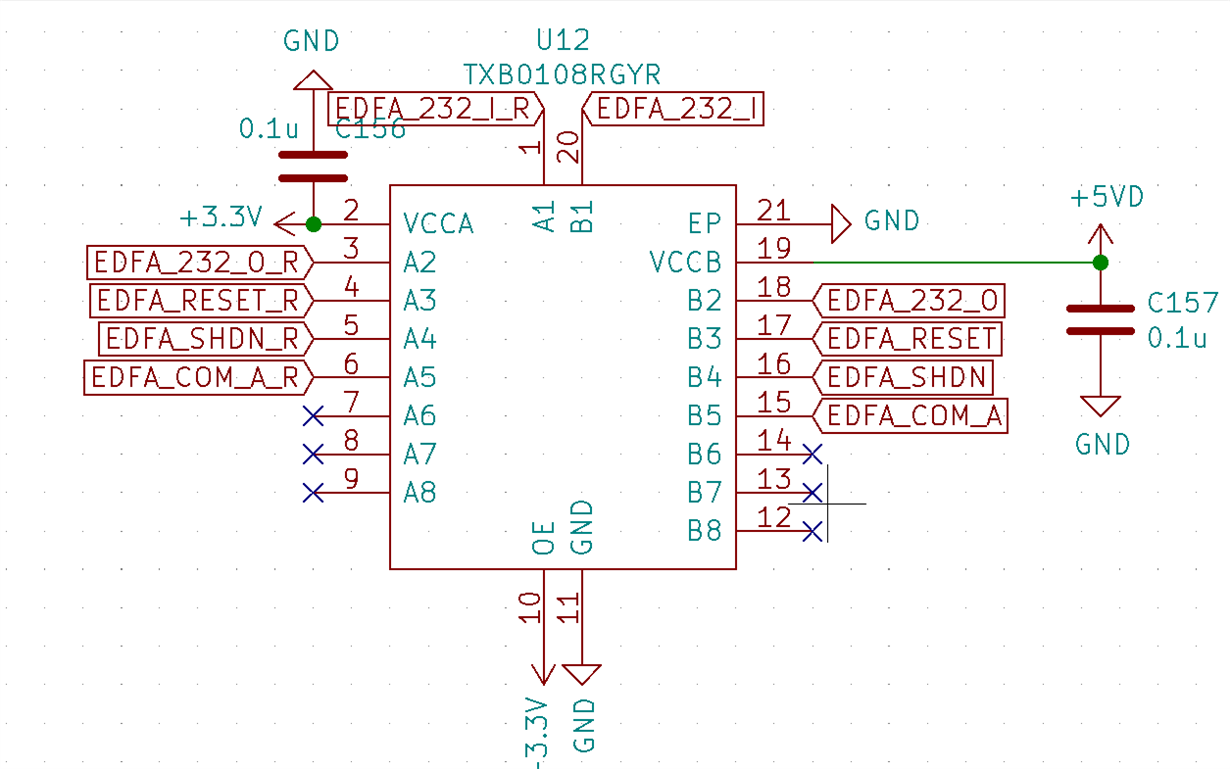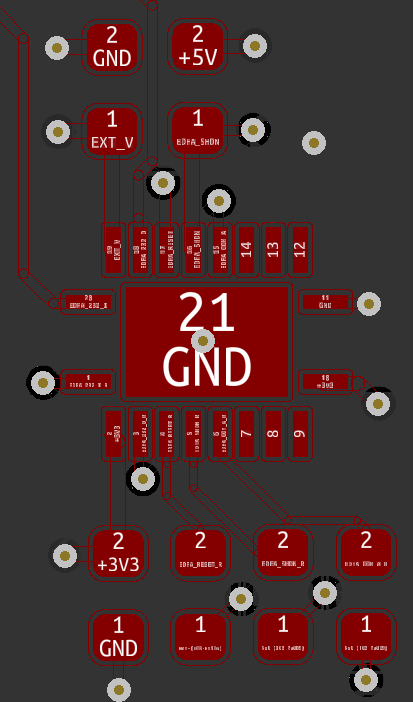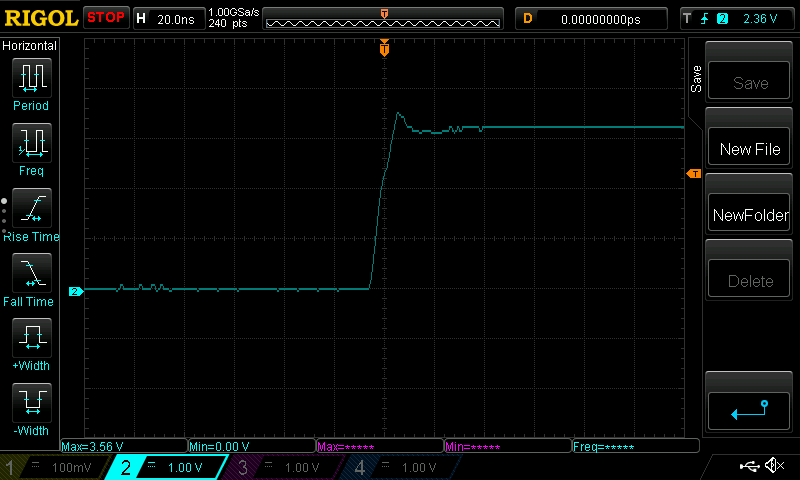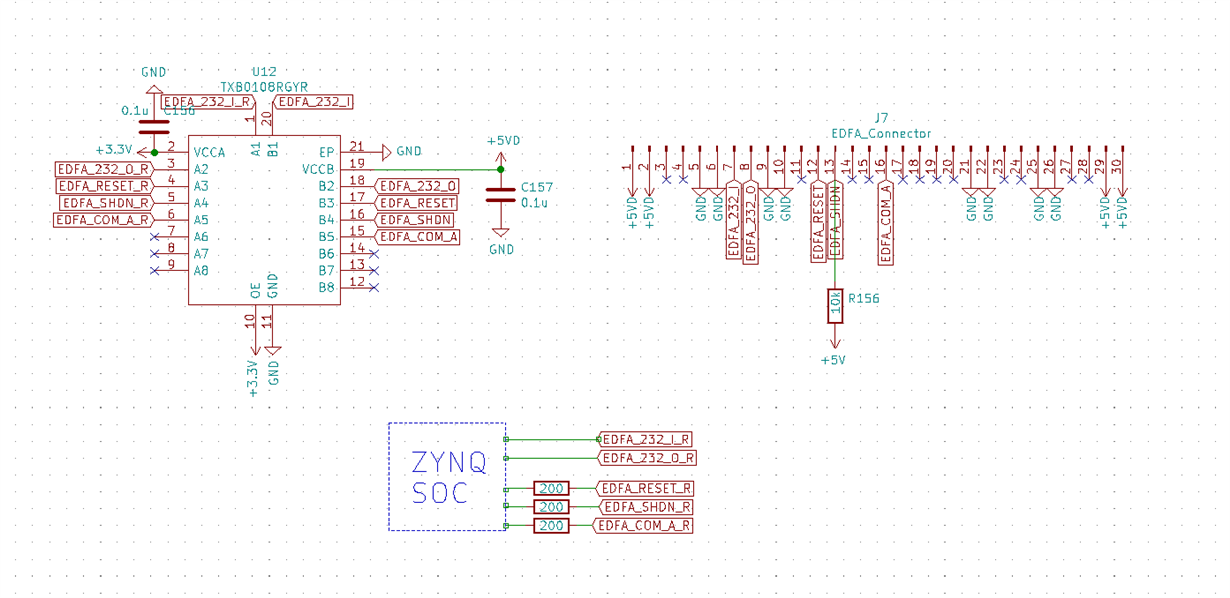I have used the TXB0108 IC to translate voltage between 3.3V(VccA) and 5V(VccB).
When i provide a high logic level at any of the 3.3V channels the corresponding output channel does not reach 5V and starts oscillating at a frequency >40 Mhz. ( tested using an oscillioscpe to test with 1Mohm resistance and 13pF capacitance at input).
When i tried connecting a series resistor of ~1k to the output channel, the oscillations seem to dissappear and 5V output is seen, but for a low level input (0V), the ouput seems to be around 1.6V.
I am attaching the schematic and Layout here.
I have used 200 ohm series resistor with the input channels.
Also attaching the output of one of the channels (without any resistors in series at the output
I have used 5 out of the 8 channels and left the remaining channels unconnected. OE pin is directly interfaced with 3.3V since I'm not using the pin.
So far, the mistakes i did was that i left the unconnected channels open, it should have been grounded instead. And I had used a pull up resistor (10k) in one of the output.
I am facing the oscillation issue in all the channels, what could be the issue?






